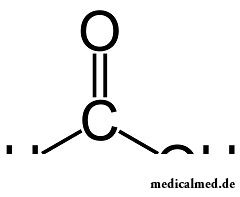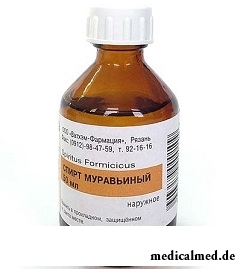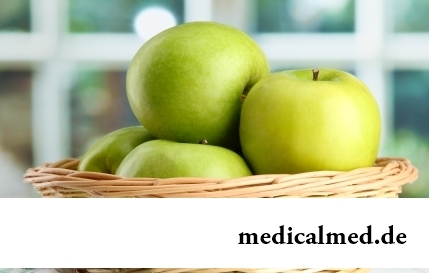





Formic acid
Formic acid belongs to saturated monobasic carboxylic acids.
Ant (differently – metane) acid represents uncolored liquid, soluble in benzene, acetone, glycerin and toluene.
As nutritional supplement formic acid is registered as E236.
Formic acid received use in:
- To medicine, as outside anesthetic;
- Agriculture where it is widely used for preparation of forages. It slows down course of processes of disintegration and rotting that promotes longer preservation of hay and a silo;
- Chemical industry as solvent;
- The textile industry for wool coloring;
- The food industry as preservative;
- Beekeeping, as means for fight against parasites.
The Sintez chemical company is an official distributor of the BASF company on supply of Formic acid to Russia.
Properties of formic acid
Properties of formic acid depend on its concentration. So, it agrees the classification accepted by the European Union, safe and rendering the irritating effect formic acid concentration to 10% is considered, big concentration has already corroding effect.
Thus, the concentrated formic acid at hit on skin can cause severe burns and pain.
The contact with its concentrated couples as formic acid at inhalation can lead to injury of airways, and also an eye is also unsafe. At accidental hit inside it leads to development of a heavy necrotic gastroenteritis.
One more property of formic acid is its ability to be removed quickly by an organism, without collecting in it.
Receiving formic acid
Chemical formula of formic acid – HCOOH.
For the first time it was succeeded to allocate it from red forest ants (belly glands) to the English naturalist John Reyem in the 17th century. Except these insects from whom she also received the name formic acid in the nature is in some plants (a nettle, needles), fruit, and also in caustic allocations of bees.
Formic acid only in the 19th century was artificially synthesized by the French scientist Joseph Gay-Lussac.
The most widespread method of receiving formic acid is its allocation as a by-product by production of acetic acid which happens liquid-phase oxidation of butane.
Besides, receiving formic acid is possible:
- As a result of a chemical change of oxidation of methanol;
- By method of decomposition of glyceric ethers of oxalic acid.
Use of formic acid in the food industry
In the food industry formic acid (E236) is generally used as additive at production of tinned vegetables. It slows down development of the pathogenic environment both pleseny in tinned and fermented vegetables.
Also it is used in production of soft drinks, as a part of fish marinades and other acid fish products.
Besides, it is often applied to disinfection of barrels for wine and beer.
Use of formic acid in medicine
In medicine formic acid is applied as antiseptic, clearing and an anesthetic, and in certain cases – as bactericidal and antiinflammatory.
The modern pharmacological industry produces formic acid in the form of 1,4% of spirit solution for external use (in bottles of 50 or 100 ml). This outside drug concerns to group of drugs with irritating and analgeziruyushchy properties.
Formic acid at external use has the distracting effect, and also improves food of fabrics and causes vasodilatation.
The indication to use of formic acid in the form of spirit solution is:
- Neuralgia;
- Miositis;
- Arthralgia;
- Mialgiya;
- Nonspecific mono - and polyarthritises.
Contraindications to use of formic acid is hypersensitivity to connection and injury of skin to a site of application.
In addition to spirit solution this acid is used for preparation of ointments, for example, Muravyita. It is applied at the same indications, as ant alcohol, and also at treatment:
- Various injuries, bruises, changes, bruises;
- Varicosity;
- Fungus diseases;
- Spots, eels, and also as skin clearer.
In traditional medicine thanks to the soothing properties formic acid was used long since for treatment:
- Rheumatism;
- Gouts;
- Radiculitis.
It was used in the structures stimulating growth of hair and as means from a pediculosis.
People who got used to have breakfast regularly have obesity much less often.

The medicine promptly develops, and the fact that else quite recently it seemed by miracle can now. We are not surprised any more to the fact that sport...
Section: Articles about health
Childbirth is the most important event in life of each woman. We are women we give birth to the new little man on this light. Now the tendency to that was outlined, as men want to participate in labor too. But there is a question and whether it is worth allowing the husband...
Section: Articles about health
Cold is such painful that each sigh becomes a victory, heat "knocks" down, and the ache in joints forces to think only of pain. Some people with approach of the first symptoms of cold make the self-sacrificing decision to have a disease standing, and at best to rest in bed with a cup of hot tea. There is an opinion that if not to treat cold, then the organism itself, sooner or later, will overcome an illness. Whether so it? It is known that if in time it is simple not to begin treatment, apparently, harmless...
Section: Articles about health
Some people consider what for medicine of the 21st century of secrets in the field of health of the person almost does not exist. It absolutely not so. Than Bol...
Section: Articles about health
Kidneys perform the most important function of clarification of blood from those products of metabolic processes which cannot be used by an organism for obtaining energy and construction of new cells. With the urine produced by kidneys from a body of the person bulk is removed...
Section: Articles about health
Transfusion of donor blood has almost century history. In spite of the fact that this procedure is quite usual for many people, process of blood donation is still surrounded with numerous myths. Today we aimed to discredit the most widespread of them....
Section: Articles about health
Osteoporosis this general disease which main sign is decrease in density of a bone tissue. On width распростран...
Section: Articles about health
Iodine - one of thirty most important microelements in our organism. The main role of iodine consists in synthesis of thyroid hormones of a thyroid gland - the substances which are responsible for the majority of exchange processes of an organism. It is known that thyroid hormones consist...
Section: Articles about health
Memory is an ability of the central nervous system to fix, keep and as necessary to reproduce information on knowledge or skills received by the person or an animal during life. The mechanism of this process is up to the end not studied....
Section: Articles about health
Statistically, at the address to doctors seven of each ten patients complain of a headache. Actually people, periodically...
Section: Articles about health
Healthy lifestyle today in fashion, and many parents think of that the child from the early childhood played sports. Trainings will help it to become strong and hardy, will improve coordination of movements, and also will exert positive impact on mentality: it...
Section: Articles about health
We present to yours the TOP of the medicamentous means exerting the stimulating impact on a potentiality, i.e. on ability of the man to commission of sexual intercourse. At once it is necessary to tell that not always disturbances of erectile function can be eliminated with reception of this or that drug. The reasons of decrease in a potentiality there can be a set, from banal overfatigue before tumoral process in a small basin therefore if the man faces similar problems too often, it should turn...
Section: Articles about health
The problem of diagnosis was and remains to one of the most important in medicine. From that, the reason недо will be how precisely defined...
Section: Articles about health
Household skills which to us so diligently imparted in the childhood it appears, not always bring only benefit. According to results of the last researches, some habits which for a long time were considered useful and even necessary can become...
Section: Articles about health
Nightmares belong to the most unpleasant frustration. Statistically, they happen at 4% of adults, and almost at 70% of children and teenagers. During a nightmare of people dreams himself in extremely difficult, life-threatening situation. He wakens suddenly, in a condition of a fright, and, as a rule, remembers the dream distinctly. The feeling of depression and alarm does not release throughout the day, creating hindrances for work and normal communication. If such episodes repeat often, can р...
Section: Articles about health
Work of a brain is extremely complex and in many respects is not studied yet. It is confirmed also by the features of thought processes which are shown in...
Section: Articles about health
At this plant there are a lot of names: tuberiferous sunflower, Jerusalem artichoke, solar root, earth pear. Contrary to popular belief, it is not an exotic plant at all. The wild girasol grows in a midland of Russia practically everywhere: at the edges of roads...
Section: Articles about health
The naturopathy sometimes moves as the new direction of medicine, something like fashionable hobby, and there is nothing farther from the truth. This most ancient direction, the word "naturopathy" is translated as "treatment by the nature", and, no doubt, treatment by natural gifts was the first and only, available to the person in ancient times. Despite modern achievements of medicine, the naturopathy remains urgent and today, anyway the person - a part of the nature, and природн...
Section: Articles about health
The trophic ulcer is not an independent disease. This heavy complication arising owing to a thermal injury (a burn...
Section: Articles about health
Phobia – the persuasive fear of a certain contents shown in a specific situation against the will of the person. Concepts of a phobia and fear are similar, however if the fear is natural protective function of mentality, then the phobia is its deviation. So the person can an ispytyva...
Section: Articles about health
The thought that the mass of their body is too big at least once in life visits from 80 to 95% of women. Many women are so obsessed with this idea that constantly try all new and new ways of weight reduction. A considerable part of these techniques is ineffective, and some in general are unsafe for health....
Section: Articles about health
Cystitis, or inflammation of a mucous membrane of a bladder, this very widespread disease, which, owing to some persons...
Section: Articles about health
For most of the working people the problem of having a snack is particularly acute enough. Sooner or later there is a question: what can be eaten quickly between a breakfast and a lunch or a lunch and leaving from service so that to receive necessary power feed, but not an overload...
Section: Articles about health
Producers of milk mixes for children assure: mixes are ideally balanced and adapted for needs of babies. If mother should raise artificially the kid owing to serious problems with health, to do nothing – it is necessary to feed with substitutes of milk. However pediatricians note that not seldom women without good reasons refuse feeding of the child a breast and pass to milk mixes. Common causes of such decision – the aspiration to leave quicker...
Section: Articles about health
Hemorrhoids – extremely widespread disease. Periodically arising inflammations and bleeding of hemorrhoidal nodes пр...
Section: Articles about health
Each woman has preferences in the field of use of those goods which help us to look good, feel young and effective. Besides: selection process of favourite perfume, shampoo or decorative cosmetics already lifts a spirit...
Section: Articles about health
(Xerostomia) many people consider feeling of a xerostomia small and easily removable inconvenience. This delusion: the symptom can demonstrate existence of serious diseases. It is worth to remember also that saliva performs important functions in an organism: clears the surface of teeth of a food plaque, growth of pathogenic microorganisms oppresses, normalizes acid-base balance, liquefies food and helps to split the carbohydrates which are contained in it. Chronic deficit слюн...
Section: Articles about health
